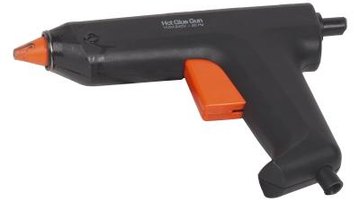How to Hide Staples When Upholstering
Upholstering a piece of furniture can be a big undertaking, but using a staple gun reduces some of the effort. The staples hold the fabric tightly and since the staples are wider than upholstery tacks, offer better coverage that helps remove uneven gaps in the final project. Although staples are convenient and effective, they are not attractive on the parts of the furniture that show. Products exist to cover the staples, like gimp, the term for the braided trim often seen on upholstered furniture. It is easy to find gimp or other trim to cover the staples.

Step 1
Measure the length of the area where you intend to use staples and record it. Obtain gimp or other trim to lay over the line of staples. Add at least 1 inch to each length of trim for the project to provide an allowance for a small hem at the end of the trim. Bring along a scrap of the fabric to match the trim or gimp. Most fabric stores carry upholstery fabric, tools and trim.
Step 2
Place the staples in a straight line along the edges of the object you are upholstering, staying within a margin that your trim can cover.
Step 3
Heat the hot glue gun. When the glue melts, apply the gimp or trim along the area where you stapled. Start in the most obscure corner of the piece you are upholstering. Apply the glue in a line approximately 3 inches at a time and lay the trim over the glue as you go. Press the gimp firmly to secure it to the furniture. If the furniture you are upholstering has corners, apply extra glue at the corner and work the gimp into the corner as smoothly as you can.
Step 4
When you get close to the end, lay the trim on the last part of the area you are trimming to measure how much you need to finish the project, allowing a 3/8-inch hem. Thread the needle and sew the end of the trim down. Continue to use the hot glue gun to secure the gimp or trim, until you reach the end, adding a little extra glue to the end to reduce the chance of the end corner lifting.
References
Tips
- If you are using leather or vinyl for your upholstery material, consider using nail head trim to cover the staples. This kind of trim comes in strips with occasional nails to fasten it to the object.
Warnings
- Avoid getting hot glue on your skin. It can cause serious burns.
Writer Bio
Jackie Johnson is a published writer and professional blogger, and has a degree in English from Arizona State University. Her background in real estate analysis prepared her for objective thinking, researching and writing.
Photo Credits
- Hemera Technologies/PhotoObjects.net/Getty Images
More Articles



